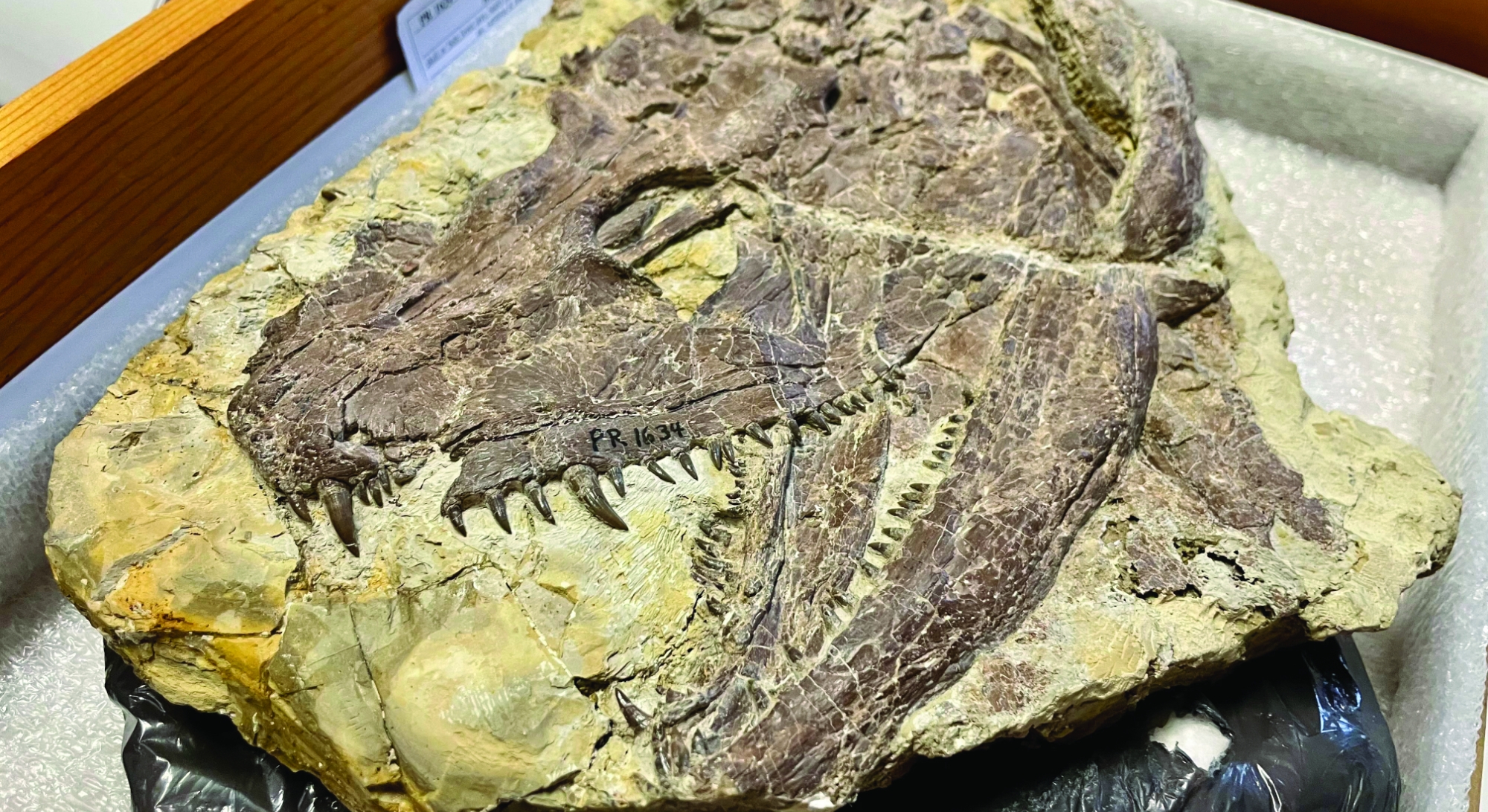
A Whatcheeria skull in the Field Museum’s collections, which include all Whatcheeria specimens unearthed thus far. Its fossils were discovered in a limestone quarry near What Cheer, Iowa. (Photography by Kate Golembiewski/Field Museum)
An ancient Iowan superpredator grew up fast.
Whatcheeria—a prehistoric superpredator that lived several hundred million years before SUE the T. rex—was a six-foot-long lake-dwelling creature. “In life, it would probably look like a big crocodile-shaped salamander, with a narrow head and lots of teeth,” says UChicago and Field Museum doctoral student Ben Otoo, SM’19, coauthor of a new study in Communications Biology. “If it really curled up, probably to an uncomfortable extent, it could fit in your bathtub, but neither you nor it would want it to be there.”
Otoo is part of a team studying the primitive tetrapod (four-limbed creature). Because the Field Museum has so many specimens—about 350—the team can study the animal at different life stages. Many modern reptiles and amphibians grow slowly and steadily from birth to death, but Whatcheeria was different. New research shows that it grew rapidly in youth and leveled off in adulthood, like most mammals and birds. This surprising revelation can help researchers better understand how tetrapods—including humans—evolved.
